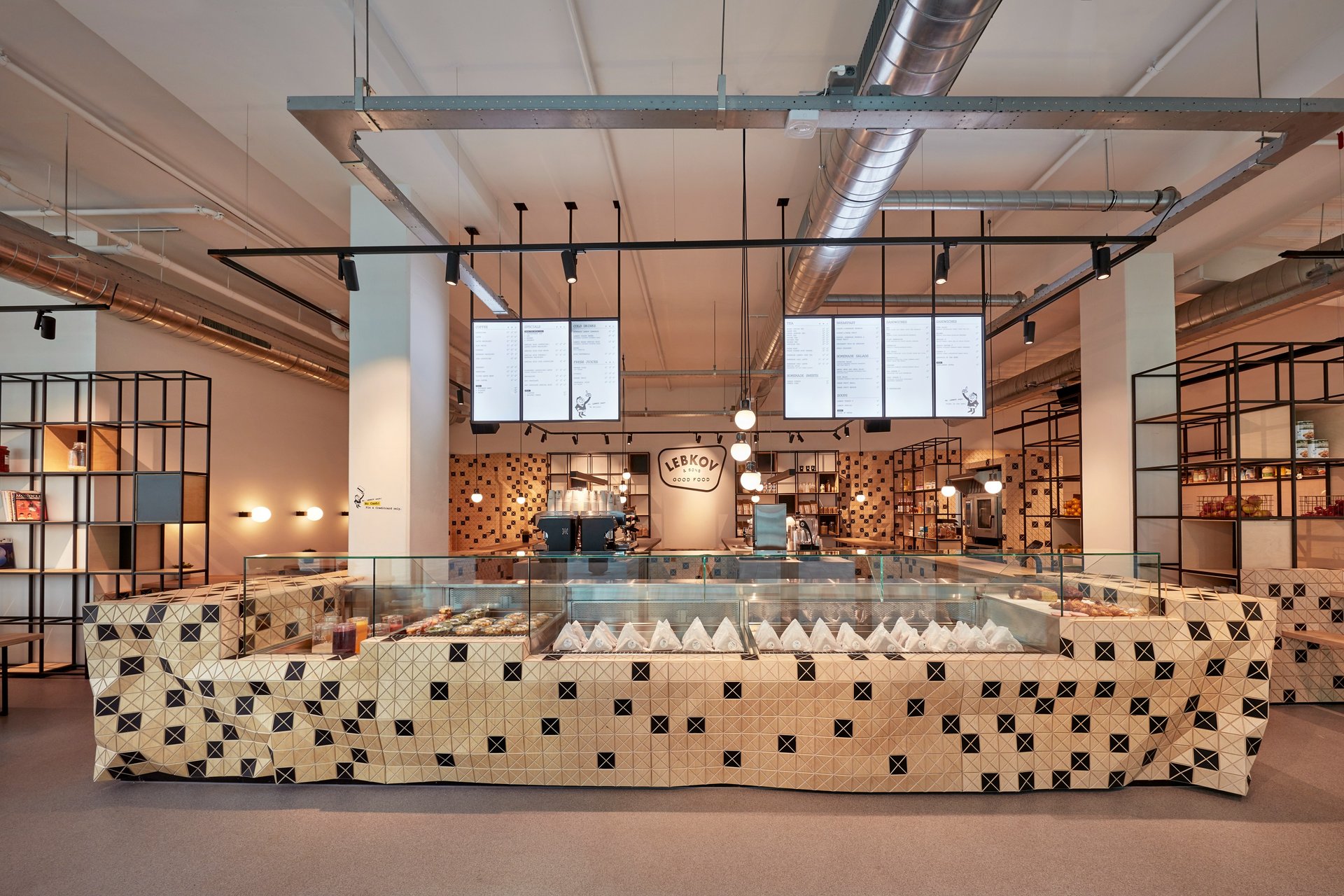
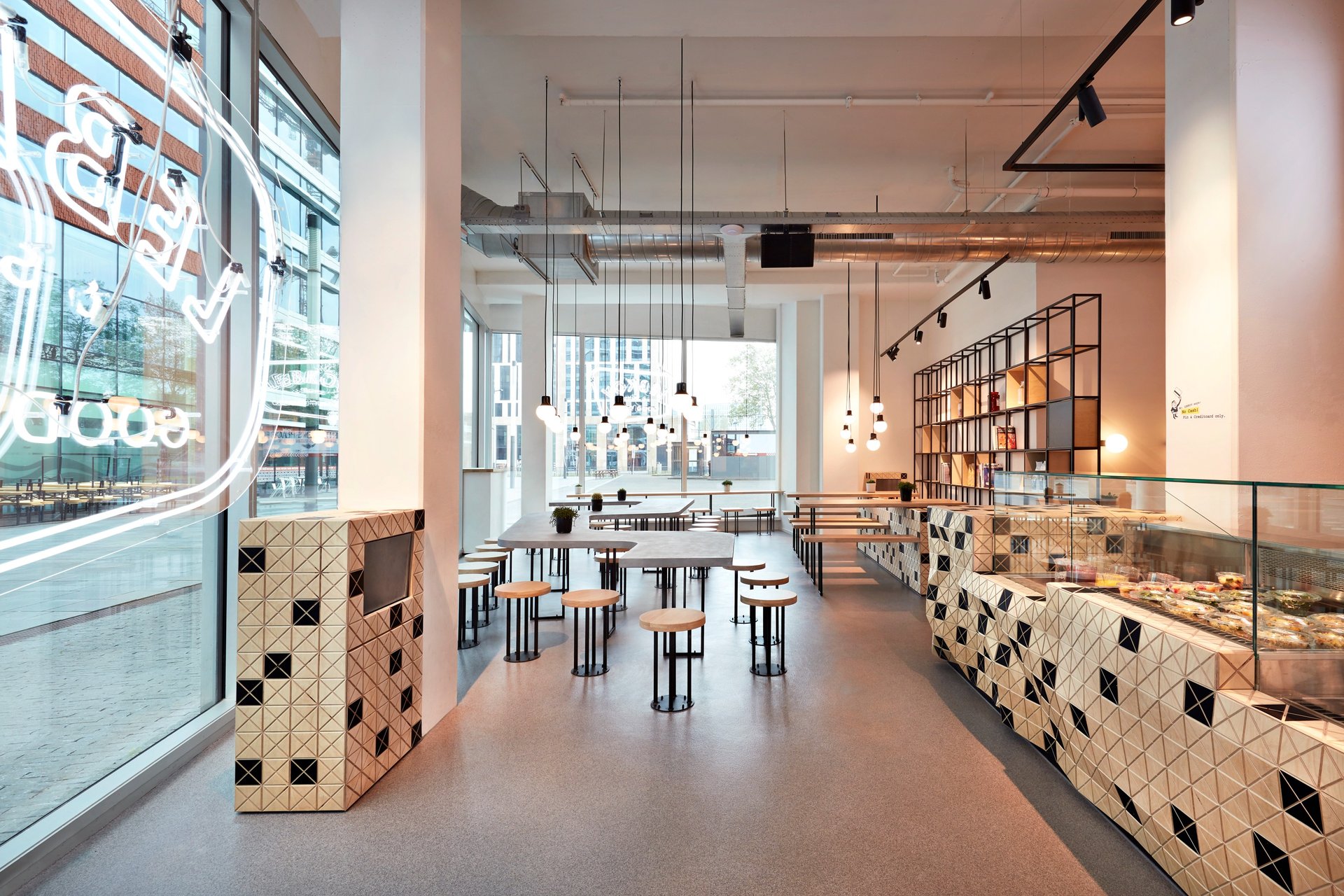
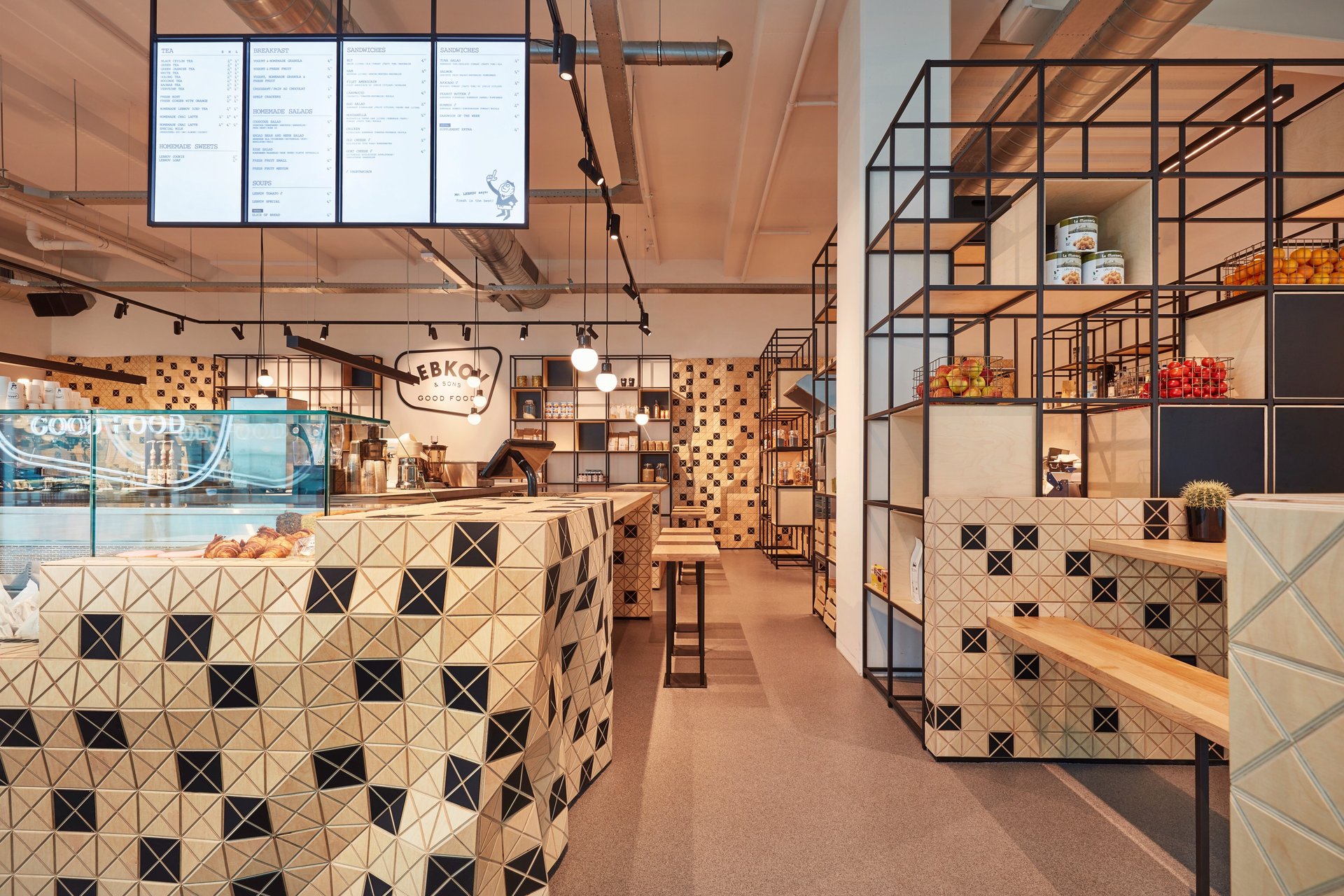
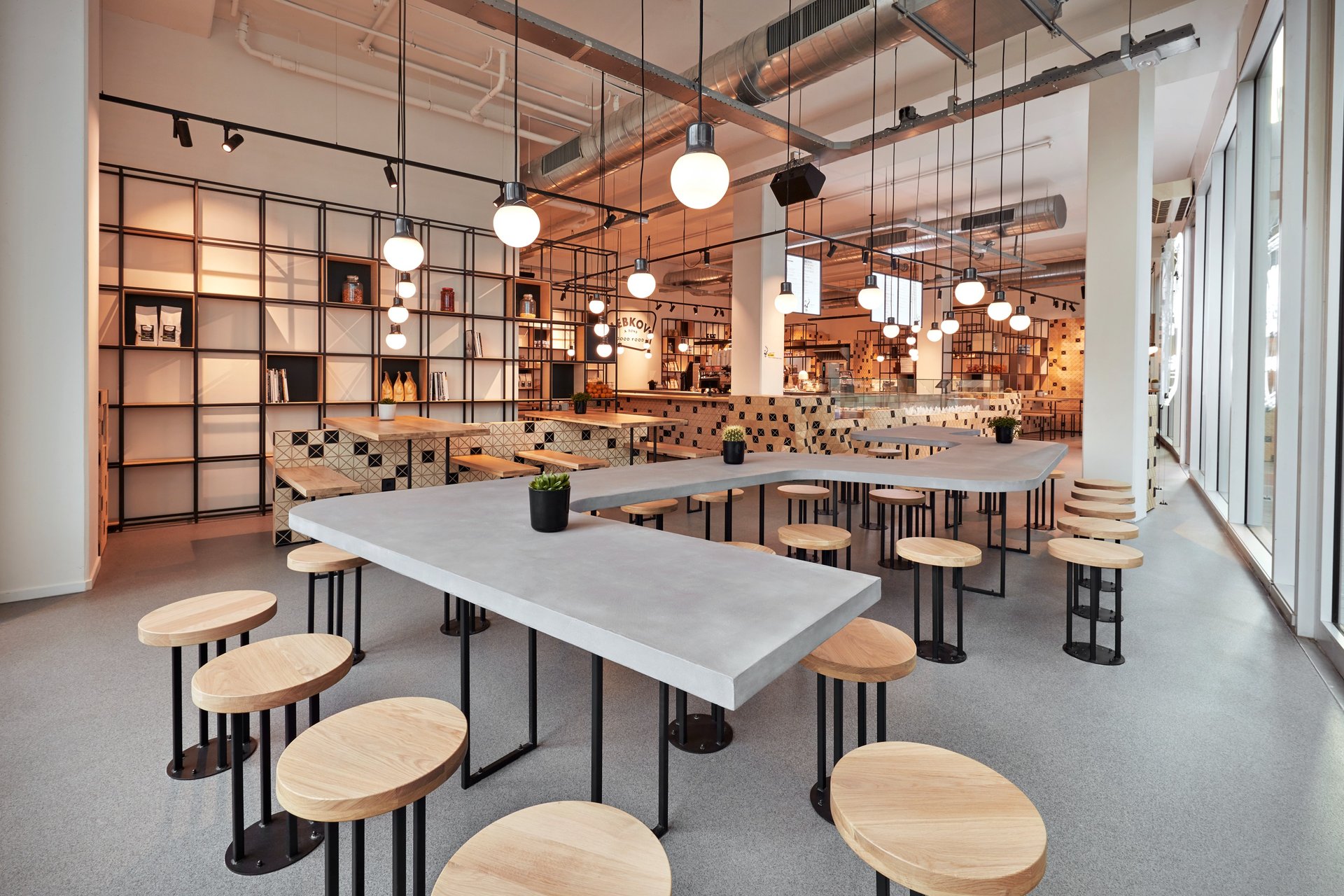
Lebkov & Sons
Amsterdam, Netherlands
2018/2020
The space is defined by an innovative reinterpretation of the iconic Lebkov pattern, now transformed into a textured landscape of black and light-colored wooden panels. This design brings an organic flow to furniture and wall claddings through engraved, crumpled surfaces that adhere precisely to the linear edges required for countertops, doors, and other structural elements.
Achieving these scrunched-up, origami-inspired forms demanded an advanced computational approach, translating rigid origami principles into practical, buildable shapes.
My role involved digitally modeling these intricate patterns and forms, enabling them to be accurately reproduced during installation. This process required not only deep expertise in rigid origami mathematics but also the ability to align the material's physical properties with digital algorithms—a blend of theoretical precision and practical understanding.
The result is a harmonious, visually dynamic space where black-and-wood cladding unifies the environment, while wood, concrete, and steel materials interact subtly under the warm, discreet lighting design to evoke a welcoming, authentic atmosphere. Through this complex fusion of materials, shapes, and textures, the space evolves into a distinctive “third place,” where guests can experience comfort and creativity in equal measure.
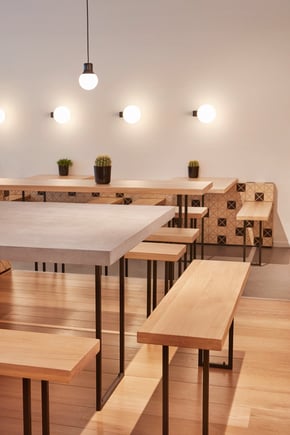
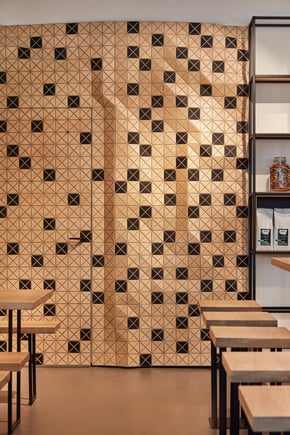
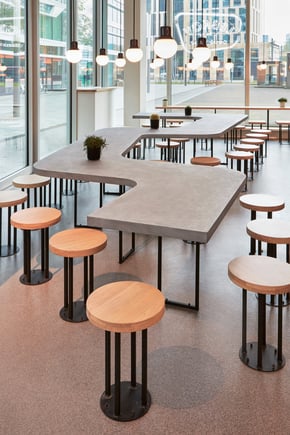
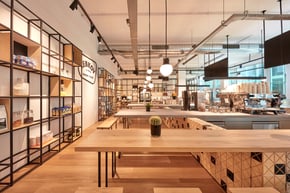
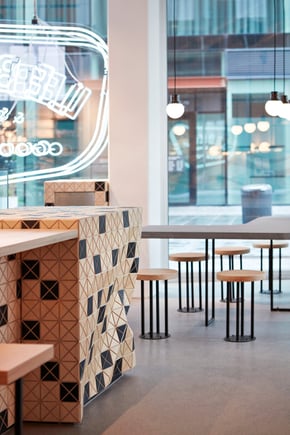
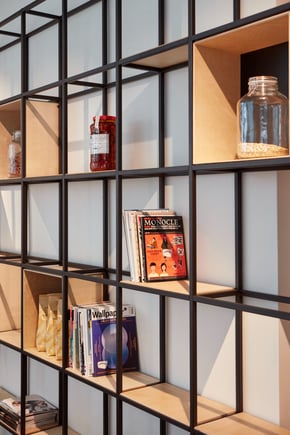


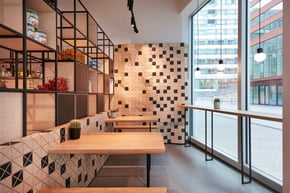

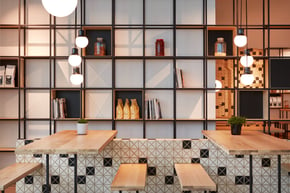
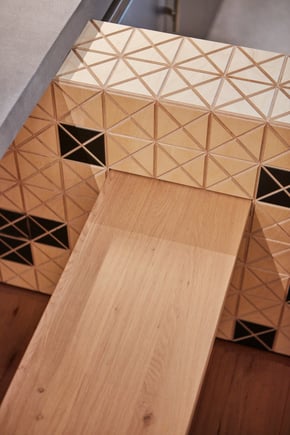
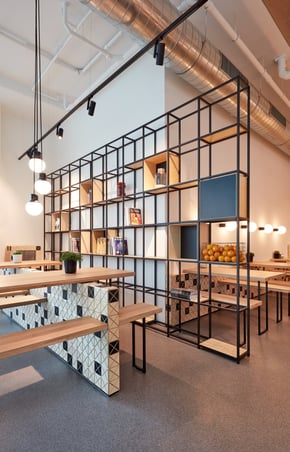

















Here's a comparison between what has ben designed and modeled virtually, simulating the behaviour of the pattern like a crumpled origami hardsheet.
The prediction model helped us design the internal fixings in order to achieve the desired shapes and fit to the existing underlying counters structures.
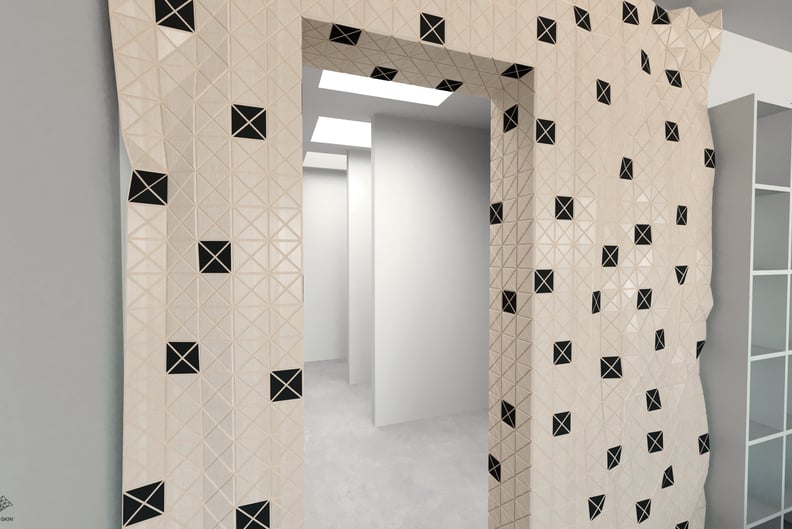

PHOTO CREDITS: Corentin Haubruge
